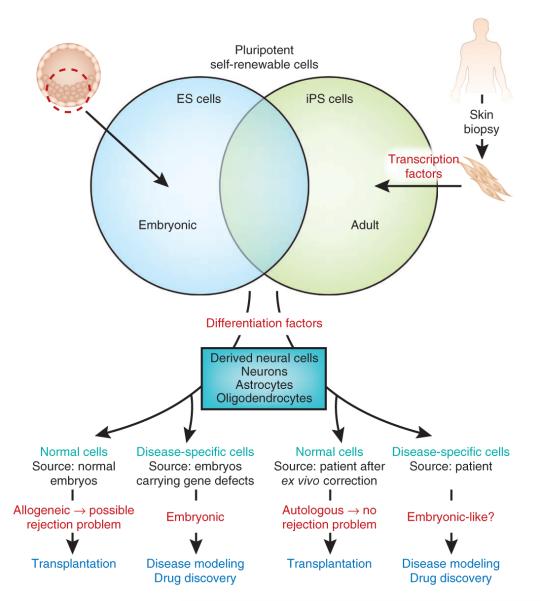Figure 1.
Pluripotent cells are obtained either directly from ES cells or indirectly from somatic cells such as skin fibroblasts transformed into iPS cells by exposure to transcription factors. Both ES and iPS cells can be coaxed into a variety of neural cell types. Once produced and, if necessary, purified, these neural cells could be used for disease modeling if the ES cells originate from embryos that carry the disease-causing defect, or if the iPS cells derive from an individual with the disease. These neural cells could also be used for reparative therapies. However, in this case, neural cells deriving from normal ES cells may trigger a rejection reaction (owing to their allogeneic nature with respect to the host), and neural cells deriving from patient iPS cells may have to undergo ex vivo reprogramming of the disease-causing defect before being used.

